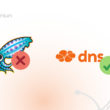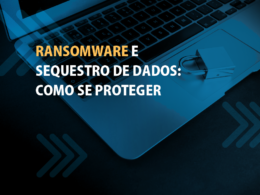Most users on the Internet have difficulty distinguishing or understanding if their business is safe through a possible attack or safety failure. For they usually do not receive information on this subject who bears the damage linked to these attacks are not employees, but the companies themselves, even in many cases this problems have been caused by misuse of technology by employees.
Most companies do not pay due attention to information security and do not perform training with employees for the correct use of the internet. Get to know some myths and understand that the responsibility for business security of companies is everyone, from employees to managers and partners.
Myth 1 - Security is an exclusive task of IT manager and his team. No matter the resources or investment employed by a company to keep it safe if the security is not an integral part of the work of all employees. There are fundamental protection measures that should be incorporated into everyone's routine, from a recruiter checking the references of a candidate, a financier scanning customer documents to his smartphone to the director in a meeting with analysts. All activities involving technology must be marked by preventive safety measures.
Myth 2 - Excessive security controls irritate users. Effective safety implies adjusting criteria according to the needs of the company, and they range from simple identity verification to low -risk situations to strict (and fast) checks for large or high -risk transactions where users expect to find robust protection. Efficient security means increasing or reducing caution as needed.
Myth 4 - The less security is discussed, the better. It is common to hear opinions like "it is supposed that banks are safe. So why draw the attention of cyber criminals?" Car automakers thus thought about automotive accidents until the situation reached an extremely critical level and solutions were created. Now information security is a need, where most companies need to invest and move forward. The more content and information about the occurrence of cyber crimes and security your employees have access, the more prepared they will be seeing that security is valued in your business.
Myth 5 - Solve security in isolation and you will be safe. It is common for many experts to evaluate or prioritize security at each system level, device, application or storage of data in isolation. However, cyber criminals are very skilled at exploring connections and failures between different levels. Therefore, it is necessary for IT managers to seek comprehensive solutions, which meet all levels of the company, from the physical structure of computers, servers and network infrastructure to the daily behavior of users in internet access. If there is failures at any of these points, the company may be vulnerable to security failures, attacks or data loss.
As we can see, implementing a security policy in companies is not a simple task. A good starts is to guide employees to use the internet correctly, see a step by step how to create an ethics manual and good use of the internet at work.











